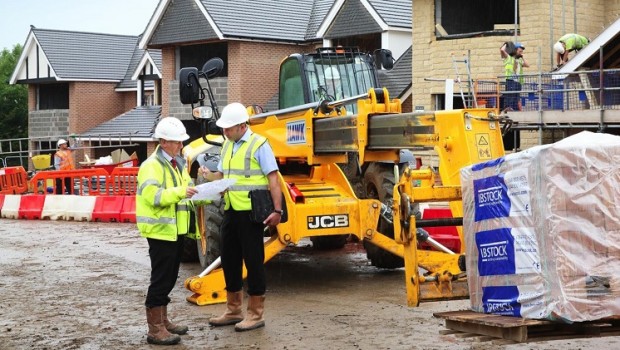Housebuilding slump weighs heavily on UK construction

The UK construction sector contracted sharply in September, a closely-watched survey showed on Thursday, as new orders tumbled at the fastest rate for over three years.
The latest S&P Global CIPS UK construction purchasing managers’ index was 45.0, a steep decline on August’s 50.8 and the first time it has fallen below the neutral 50.0 level since June. It was also well below consensus expectations of 50.0.
A reading above 50.0 indicates growth, while one below suggests contraction.
The worst-performing sector was residential, which fell from 40.7 to 38.1. Respondents cited cutbacks to housebuilding projects amid higher borrowing costs and weaker demand. It was the lowest level since May 2020, and the worst since April 2009 once the pandemic was stripped out.
Civil engineering also fell, however, to 45.7 from 52.4, while commercial building slid to 47.7 from 54.2.
Total new business orders received by companies across the sector declined for the third time in the past four months, at the steepest rate since May 2020.
Expectations for the coming year were also the weakest in 2023 to date, although the number of firms expecting output to rise - 41% - continued to outstrip those forecasting a decline, at 17%.
Tim Moore, economics director at S&P Global Market Intelligence, said: "A rapid decline in house building activity acted as a major drag on workloads, with construction companies widely commenting on cutbacks to new residential development projects in the wake of sluggish demand and rising borrowing costs.
"Concerns about the domestic economic outlook also dampened client spending, which contributed to the fastest reduction in commercial building since January 2021."
John Glen, chief economist at the Chartered Institute of Procurement & Supply, said: "The impact of high mortgage rates and low house buying demand continues to flow through the supply chain and negatively hit the UK construction industry.
"It has been a tough year for residential construction, and the sharp contraction in September shows the pressure on the sector is still a long way from easing."
Samuel Tombs, chief UK economist at Pantheon Macroeconomics, said: "The renewed rise in borrowing cost over the summer weighed heavily on construction output in September, but a downturn still can be avoided if, as we expect, labour market slack continues to increase and the pace of consumer price rises slows, bearing down on the risk-free interest rates soon."